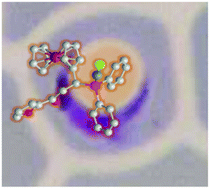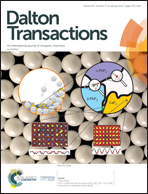Evaluation of ferrocenyl phosphines as potent antimalarials targeting the digestive vacuole function of Plasmodium falciparum†
Abstract
Owing to their lipophilic nature and chemical stability, ferrocene and its derivatives have been widely explored as antimicrobial agents, in combination with other active chemical ‘war heads’. A prime example is ferroquine, an analogue of chloroquine obtained by covalently bonding ferrocene to 4-aminoquinoline, which possesses superior efficacy against multi-drug resistant malaria parasites. Herein, we explored the possibility of combining the ferrocenyl moiety with a phosphine unit and the subsequent inclusion of gold(I) to derive a molecular framework with demonstrated potential in inhibiting parasitic diseases. A library of 24 compounds consisting of 5 non-functionalized ferrocenyl enones and 19 ferrocenyl phosphine derivatives were synthesized, verified and tested against Plasmodium (P.) falciparum, which allowed us to identify compounds with low micromolar potency against both normal and chloroquine-resistant strains. Through flow cytometry combined with microscopic examination of Giemsa-stained thin smears, we observed that most of the active compounds interfered with trophozoite development as well as schizont maturation. The gold complex, namely G3, derived from the hydrophosphination of the terminal furan bearing an enone substrate showed the highest inhibitory potential. We demonstrate that G3 is affecting the parasite's metabolic processes as evident from the swollen digestive vacuole. Furthermore, G3 significantly affected heme de-toxification as determined through the β-hematin assay, which caused apparent oxidative stress on parasites leading to death. Collectively, these results point out the potential of gold-conjugated ferrocenyl phosphine derivatives as antimalarials targeting the digestive vacuole function and metabolism of parasites.



 Please wait while we load your content...
Please wait while we load your content...